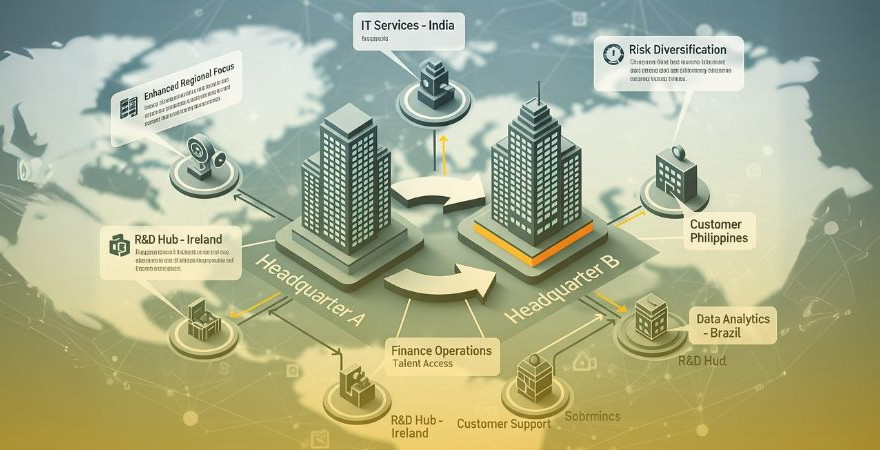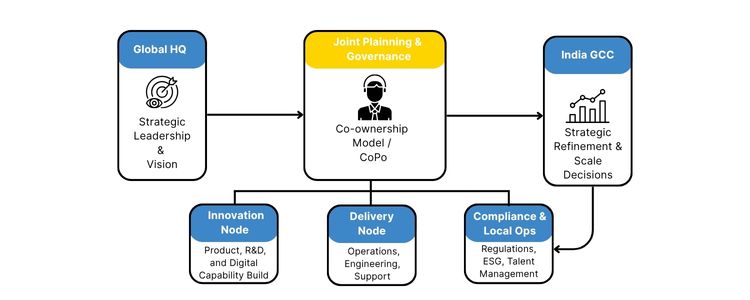The global trade scenario is going through an intensive change, and India is at the center of this change. Due to its rapidly growing digital economy and talent gains, India is expected to become the third largest economy by 2027. According to Nasscom, the GCC (Global Capability Centre) ecosystem in India has increased rapidly, and now it has more than 1,950 centers, which contribute to the value of more than $64.6 billion.
As multinational companies are facing changes towards growing geopolitical complexity, demand for real-time operations, innovation, and the GCC models with double headquarters are becoming new strategic criteria. These structures connect the operational power of Indian GCC with executive coordination in global headquarters, helping organisations to remain tight, compliant, and innovative.
The blog examines this emerging trend from the past-current-future point of view and checks how the new-age GCC service models, such as Build-operate-transfer (BOT), Copo models, and Flexi models, are strengthening the global operation of the next generation.
Originally, GCC was created to reduce costs and support back-office operations. Centralised control at the global headquarters was an ideal in which India mainly served as a distribution center. It was effective in the early 2000s, when the offshoring was completely based on transactions.
However, in the last decade, India’s GCC price has moved, and now they are carrying forward the main research and development, AI innovation, product design, cyber security, and customer experience. According to a report, more than 70% of Indian GCCs now own global products and platforms.
frequently asked questions (FAQs)
1.
What is the GCC model of two headquarters?
There is shared leadership and strategic decision-making between the Global Headquarters of the parent company and the GCC in India. This is the GCC model of having two headquarters.
2.
What are the benefits of the model of dual headquarters to Indian GCC?
It transforms Indian GCC as execution units to strategic hubs, and the result is initiatives worldwide, innovation, and attraction of top leadership.
3.
How is GCC aligned on two headquarters, and how is ESG addressed?
Dual-headed buildings enhance the governance, as the local and global leaders regulate the regulatory, ESG and data privacy regulations collaboratively.
4.
Why would the flexi model be alluring to GCC installation?
The Flexi model offers modularized, on-demand services aligning with the fast-changing business needs, particularly the up-and-coming innovation and control and process.
5.
What are the economic advantages of setting up a GCC in India?
India has savings of up to 60 percent, good digital infrastructure, 1.5 million technical graduates, and progressive GCC state-level policies each year.
Aditi
Aditi, with a strong background in forensic science and biotechnology, brings an innovative scientific perspective to her work. Her expertise spans research, analytics, and strategic advisory in consulting and GCC environments. She has published numerous research papers and articles. A versatile writer in both technical and creative domains, Aditi excels at translating complex subjects into compelling insights. Which she aligns seamlessly with consulting, advisory domain, and GCC operations. Her ability to bridge science, business, and storytelling positions her as a strategic thinker who can drive data-informed decision-making.



















